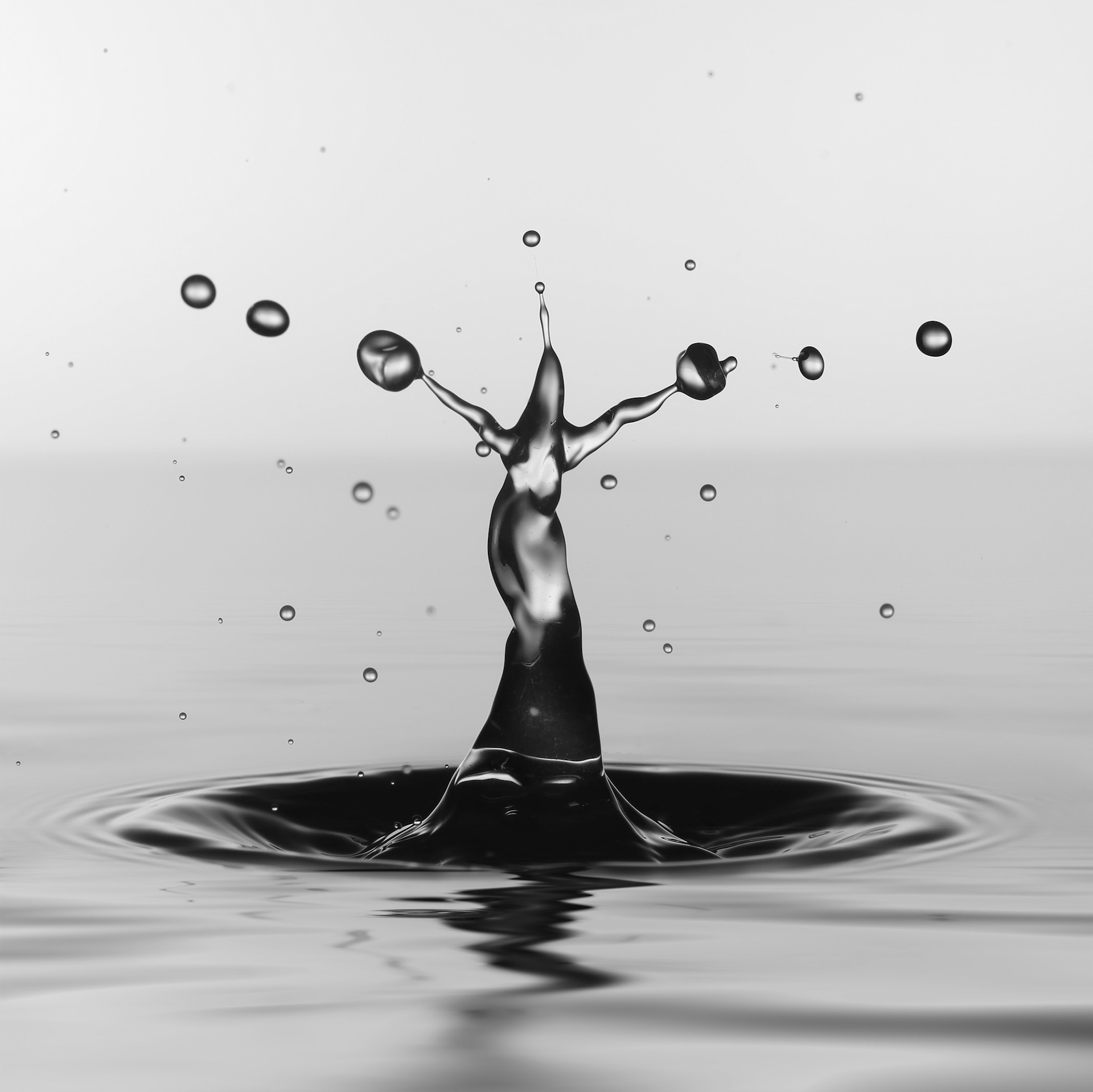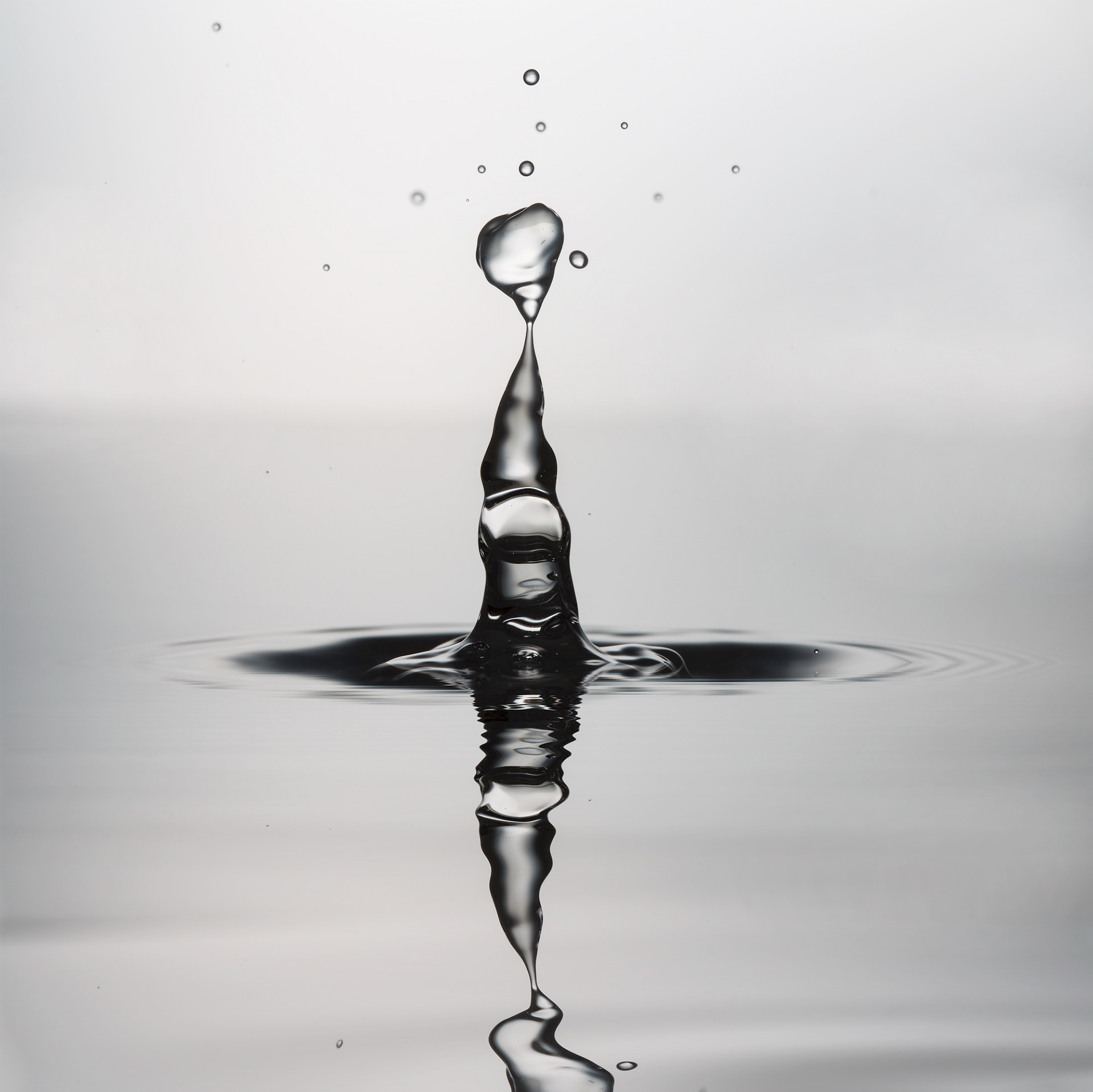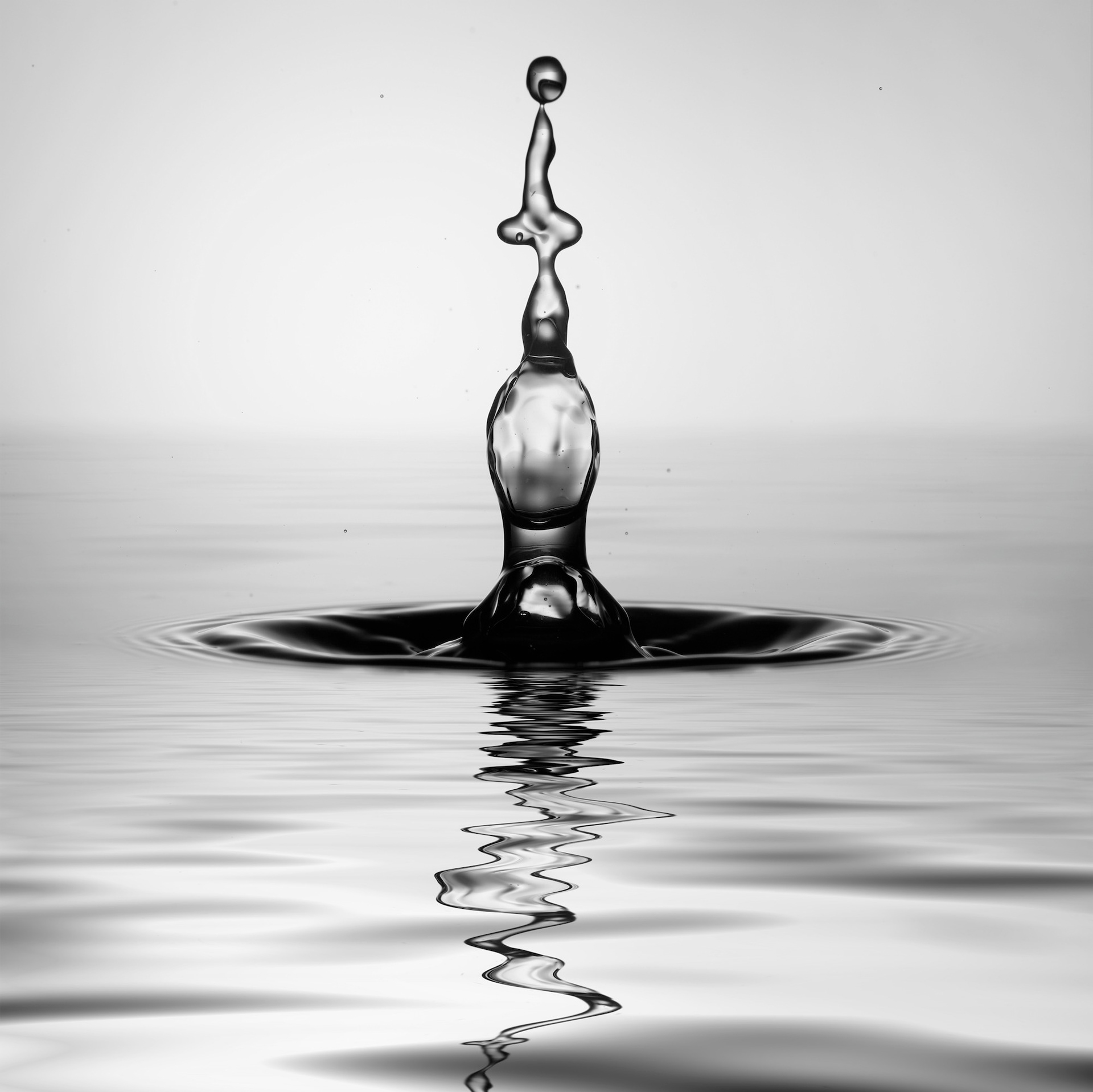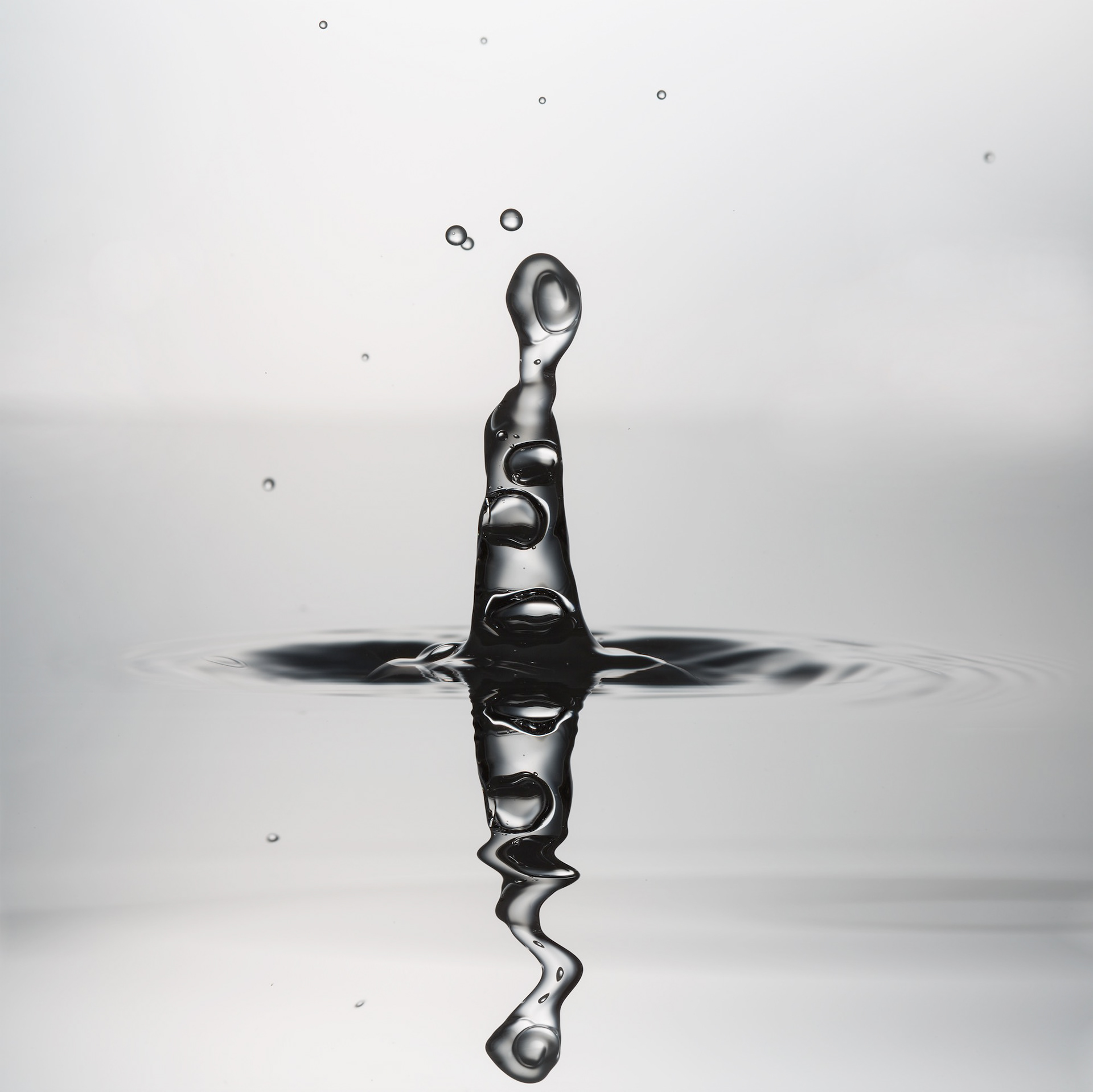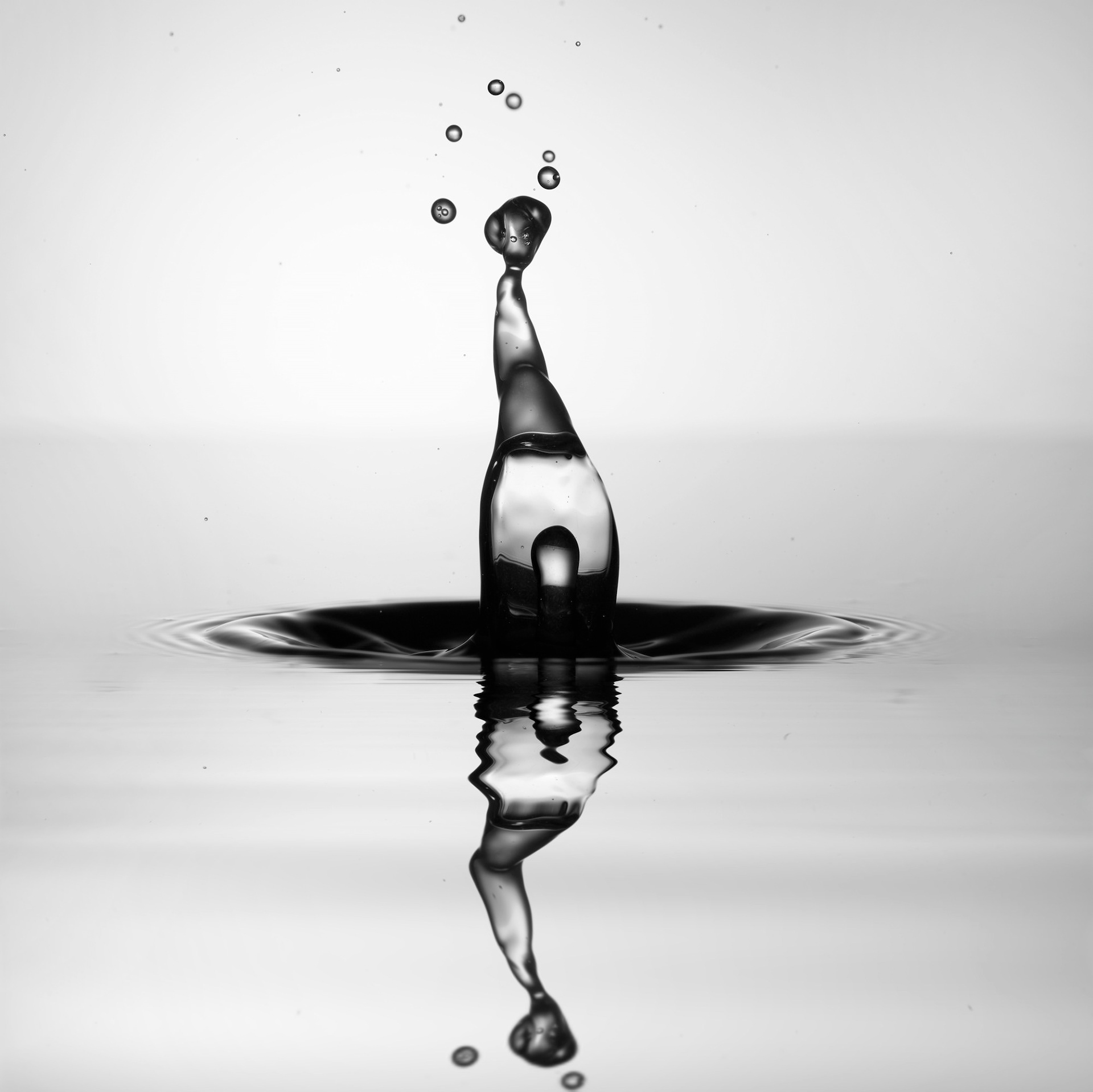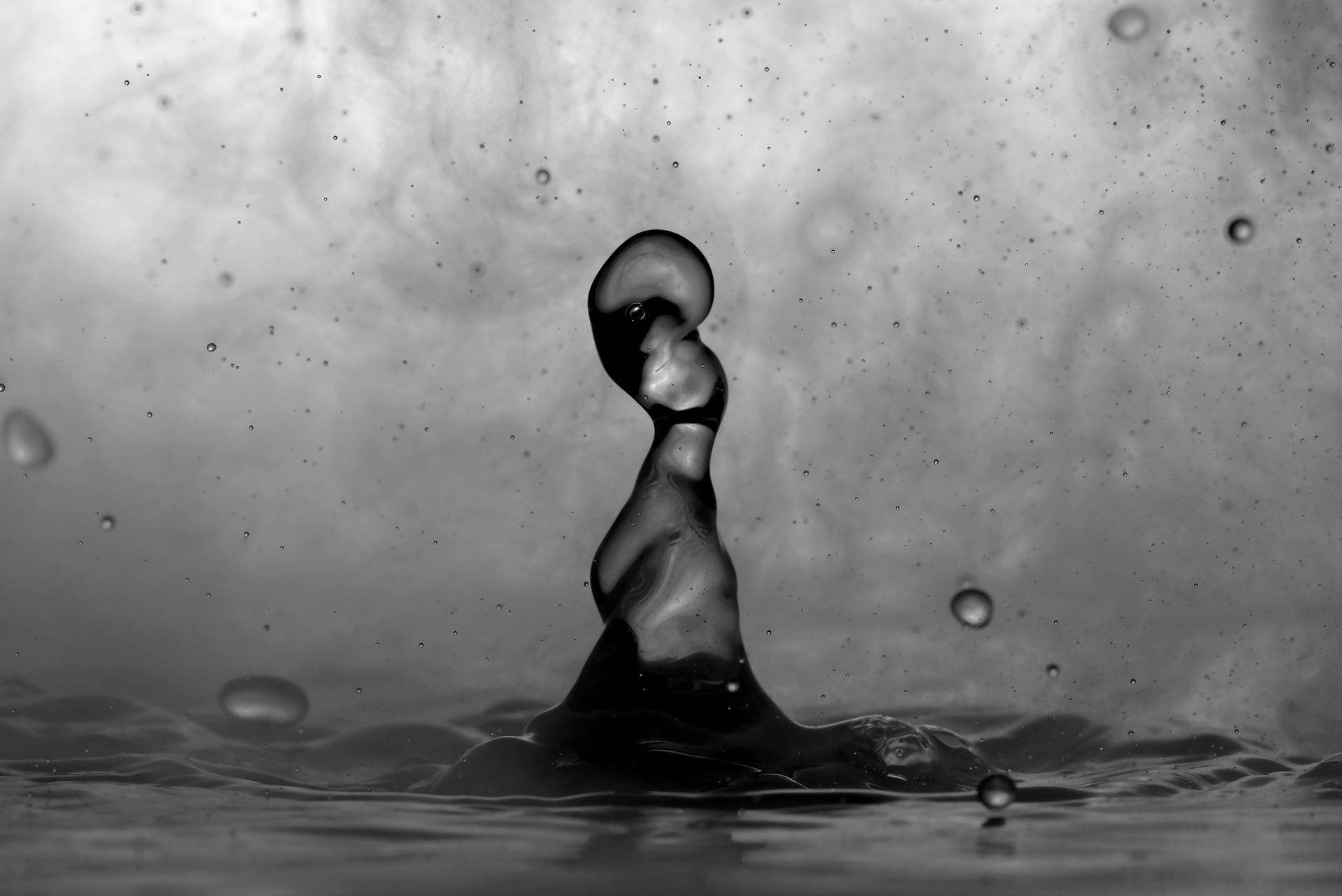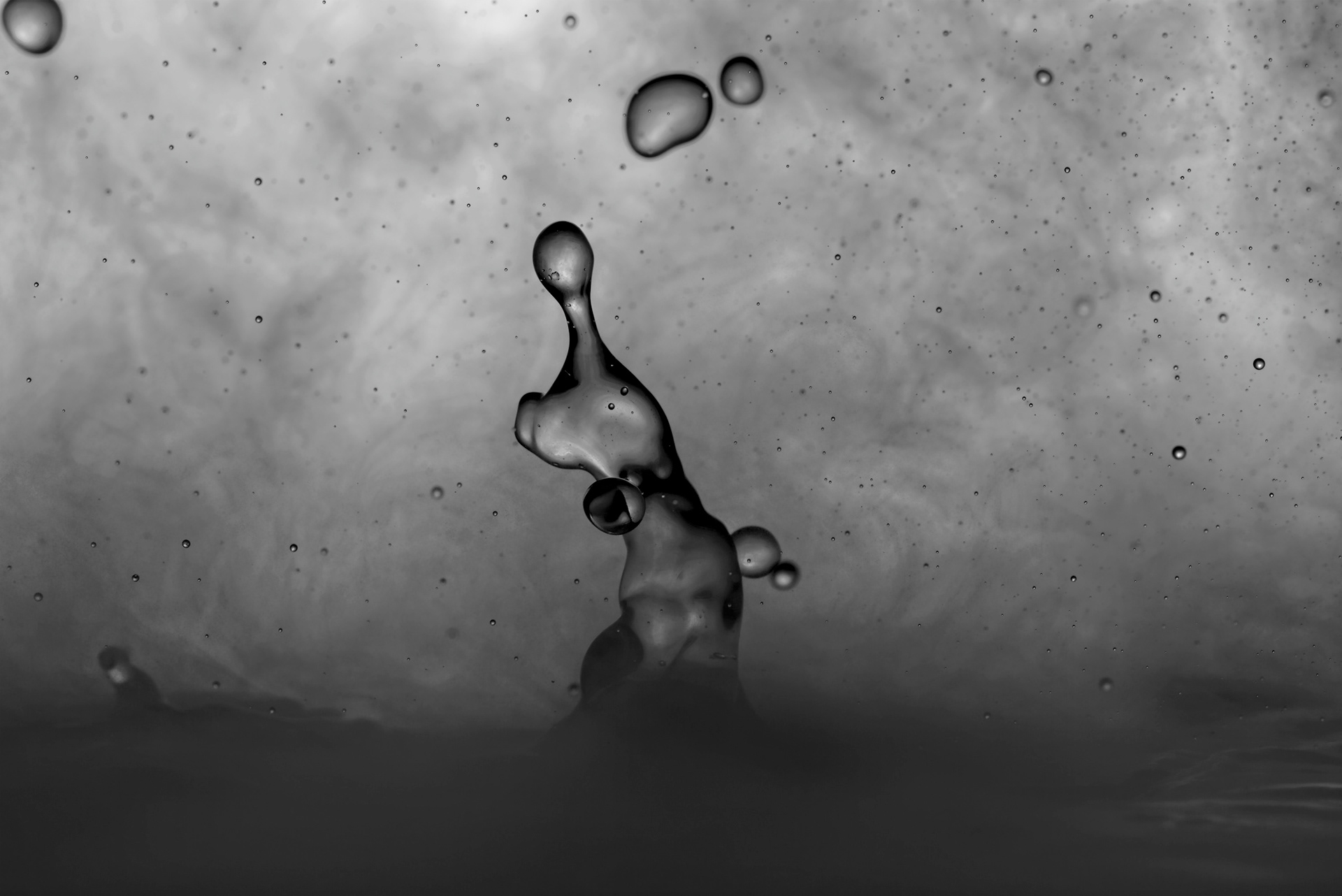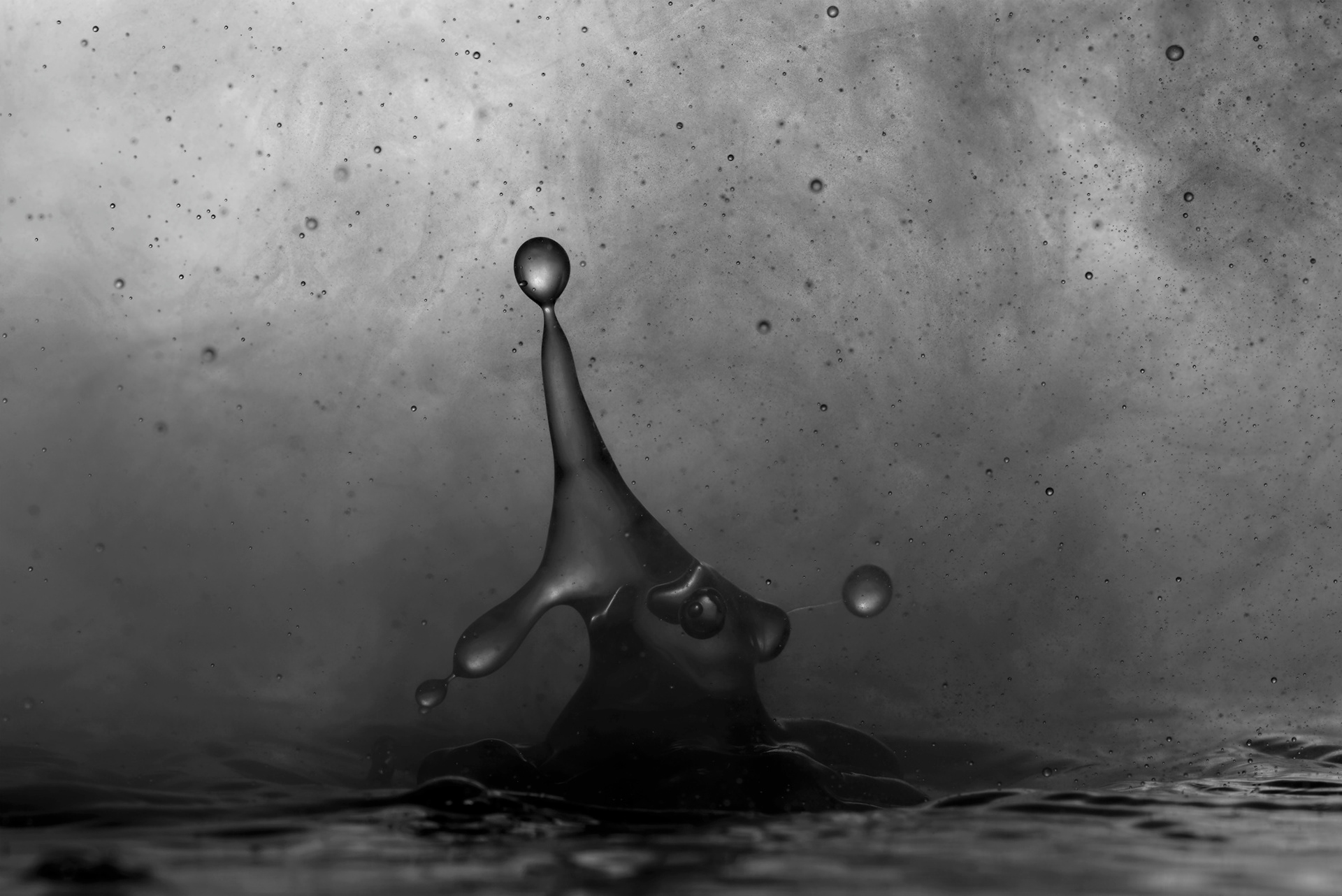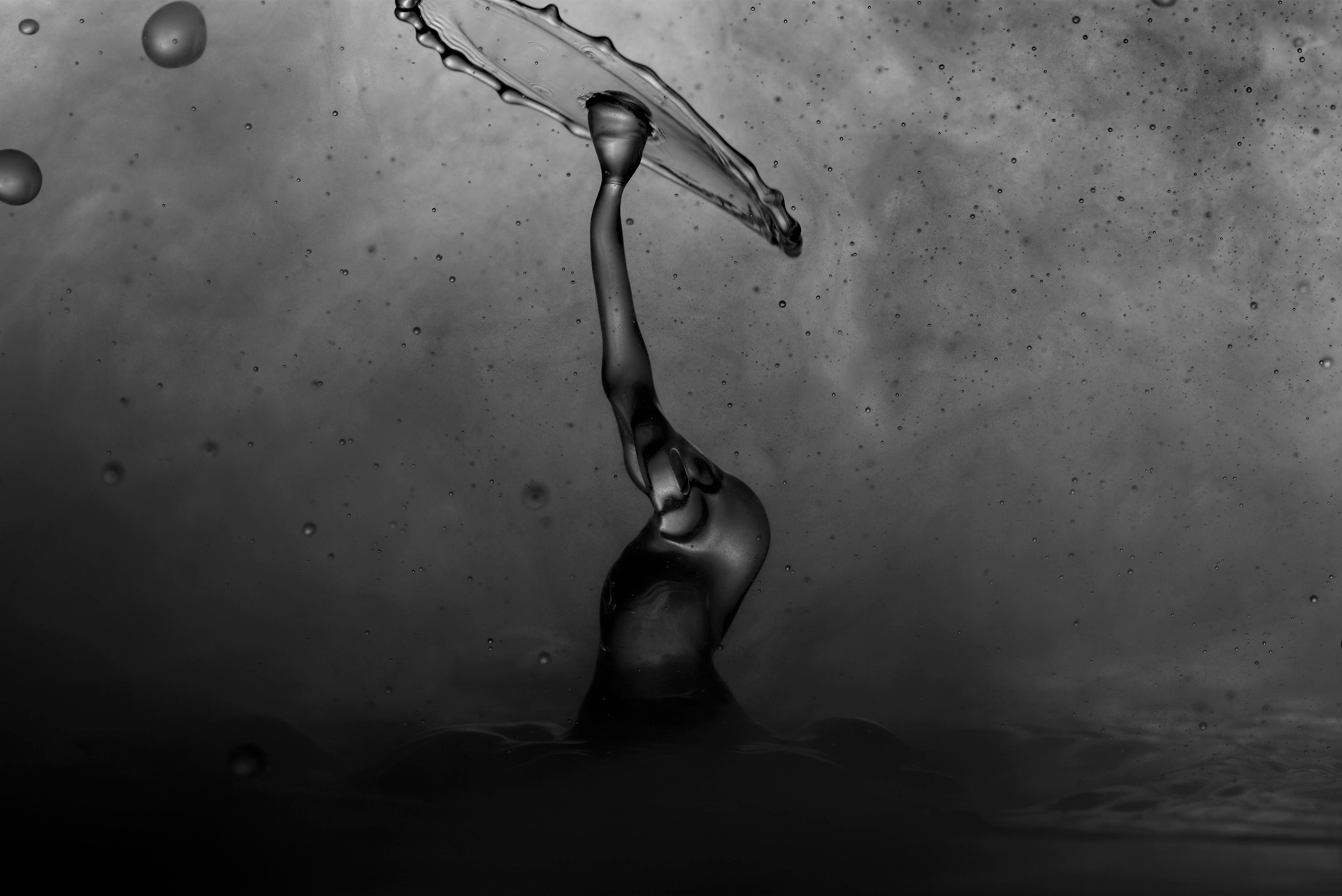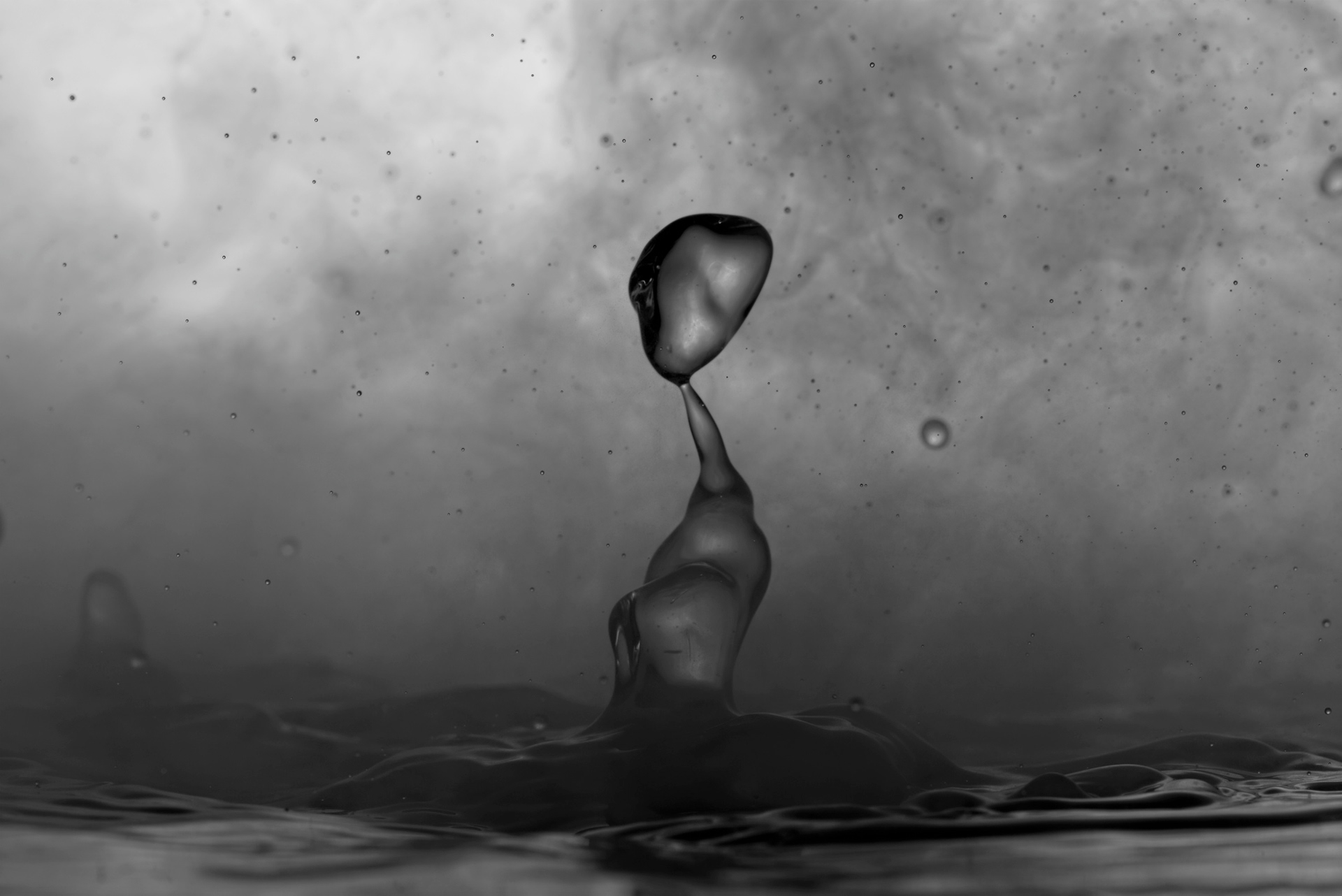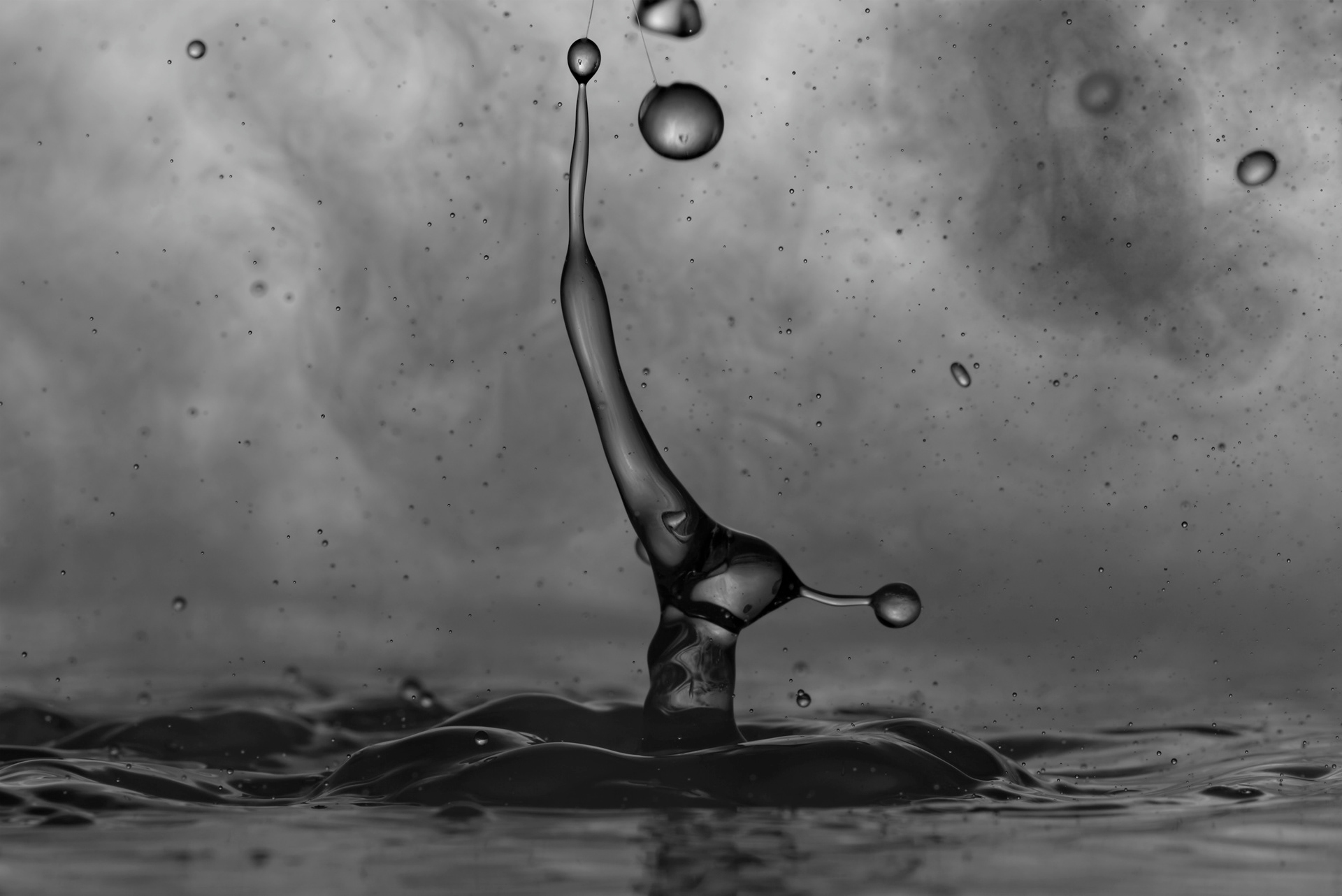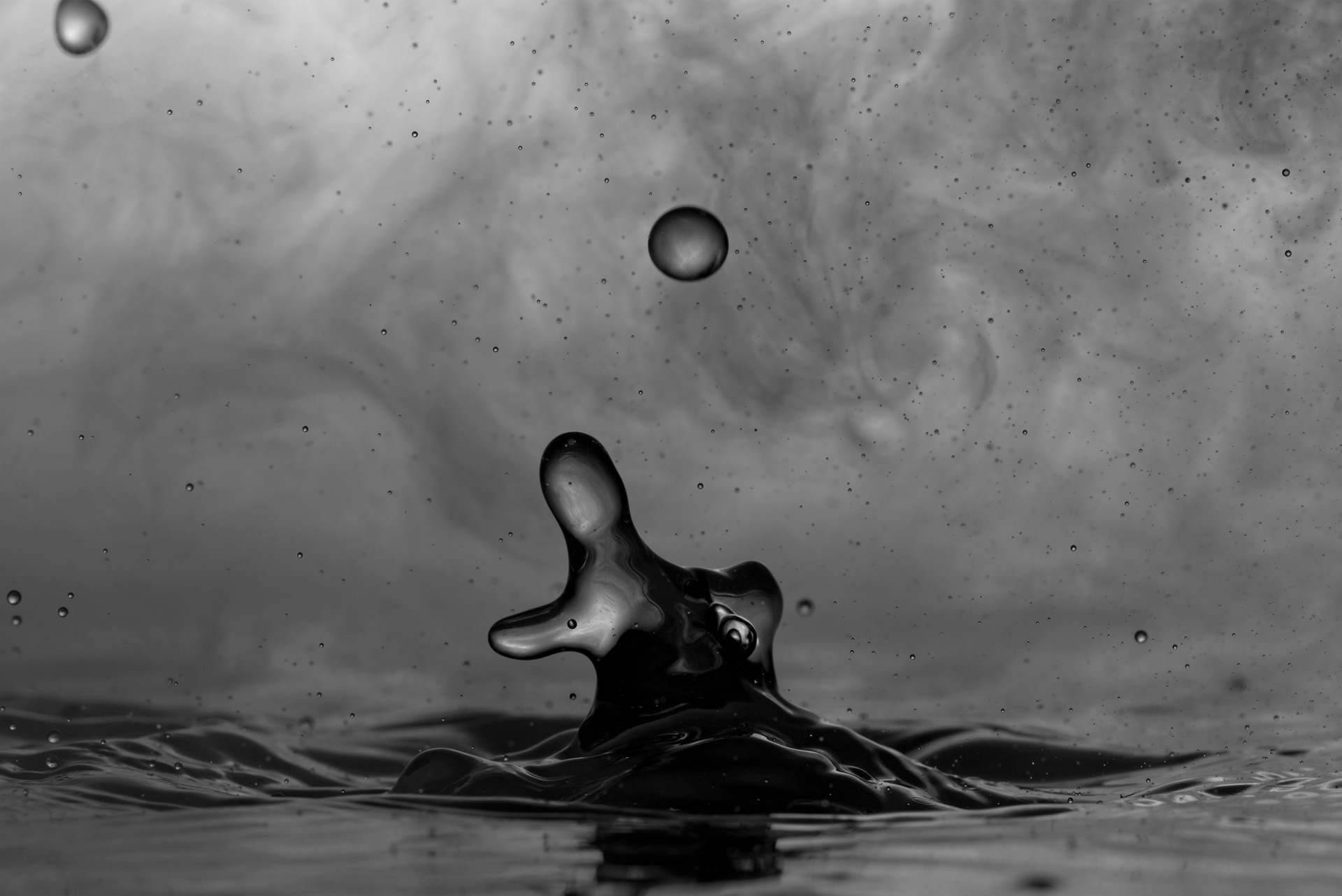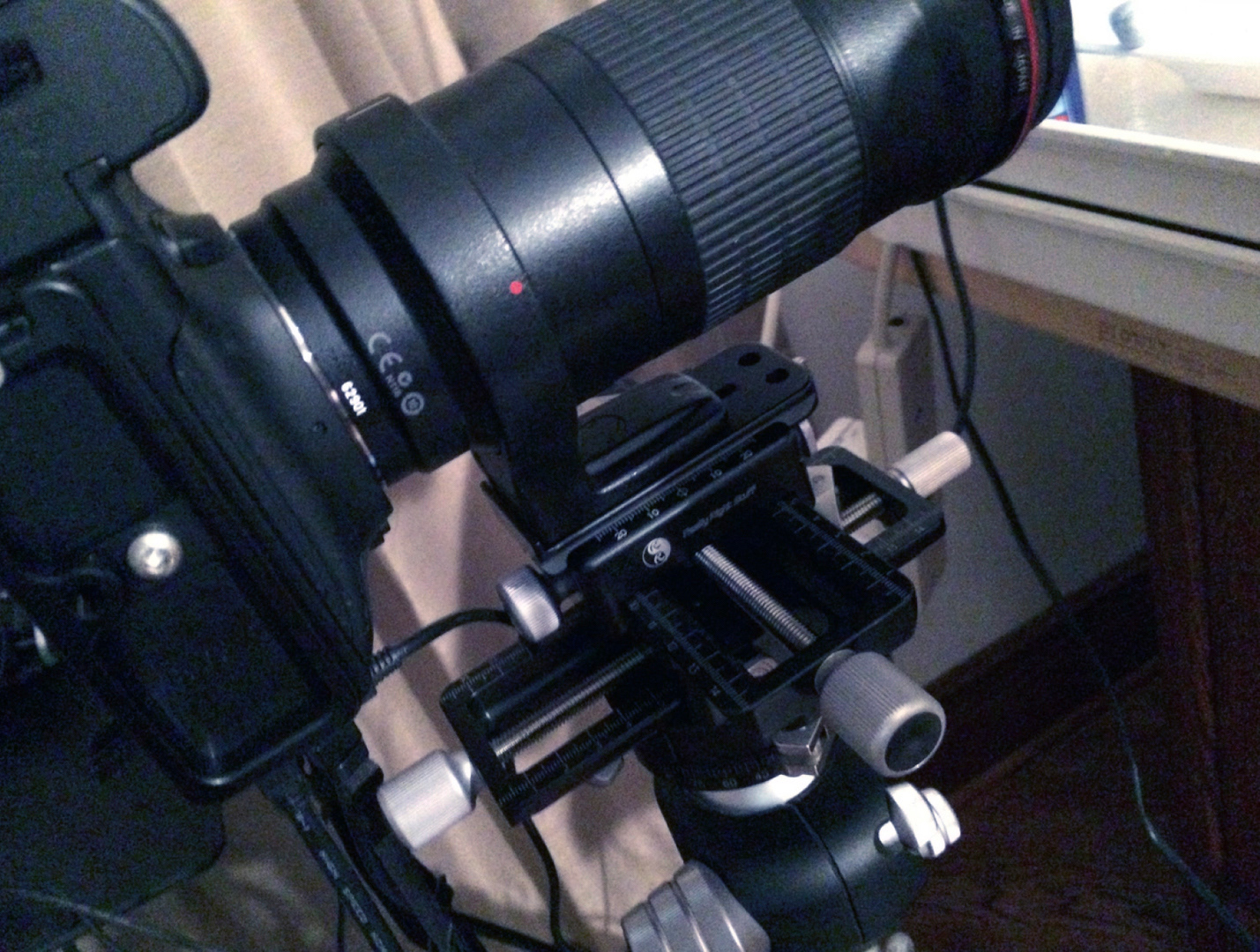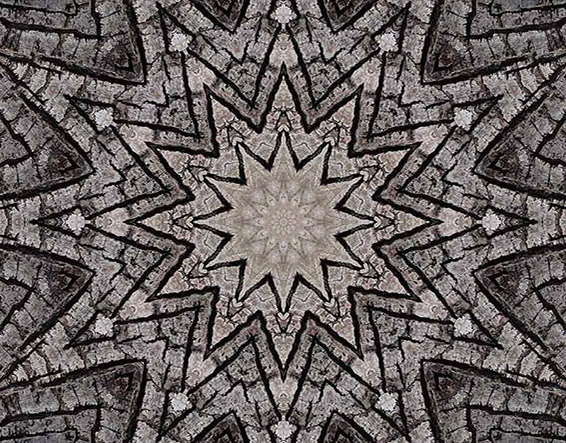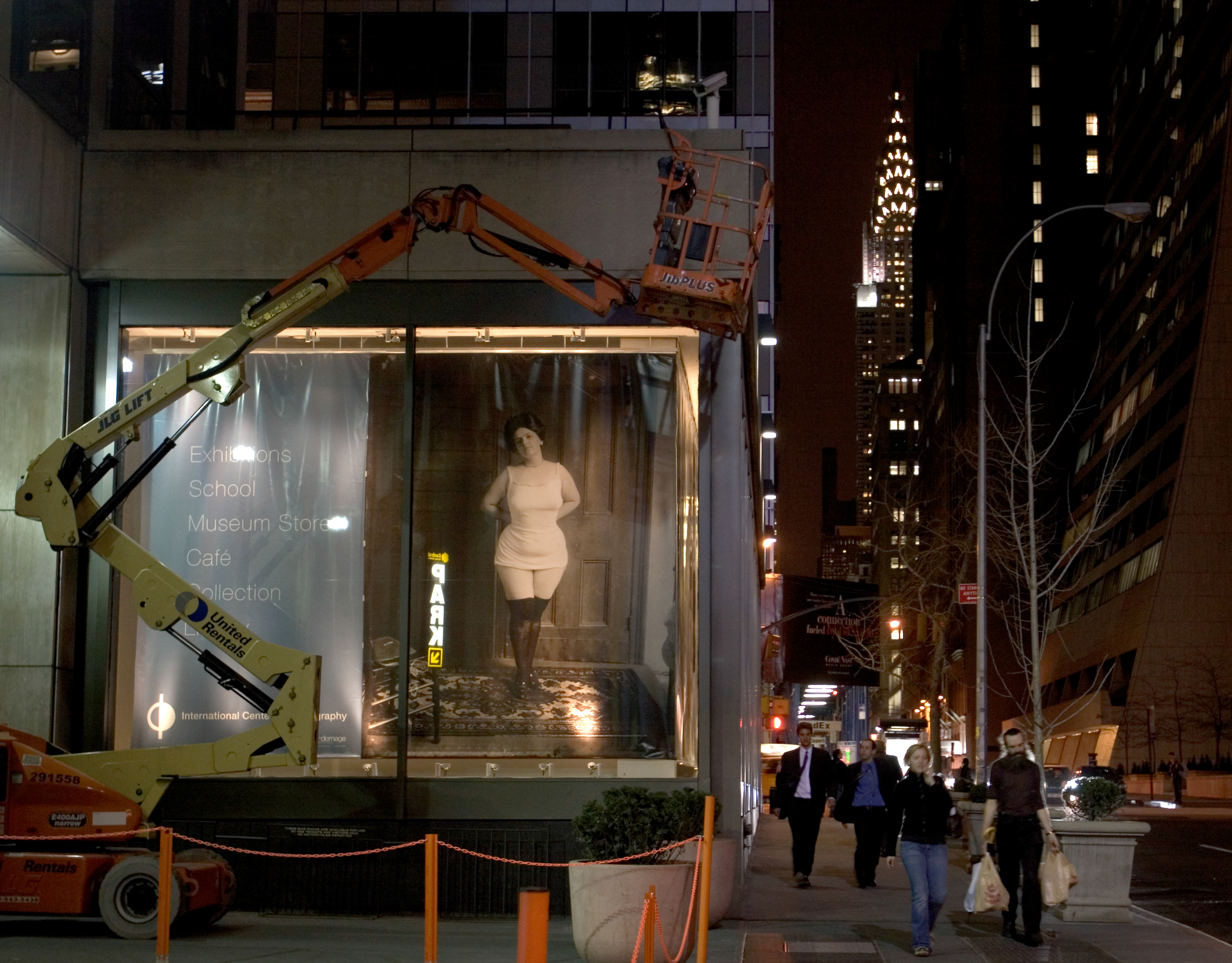Decades after Edgerton’s initial breakthroughs in high speed flash photography, it’s hard to evoke the excitement and magic of those images at “first sight.” But by avoiding the expected vocabulary of high-speed water drop photography, I hope to rekindle that wonder. To show you something you’ve never seen before.
Stripped of any clues as to their origin, these images must be interpreted by the viewer—a kind of Rorschach test. It’s up to the mind’s eye to evaluate the scale, material, and timeframe and then to categorize them based on a lifetime of experience with known forms—a human figure or face, an animal, molten glass or rock, or perhaps a Brancusi sculpture.
Over thousands of frames the size, frequency, pacing, and travel of water drops are adjusted to capture, not tame, the wild flow and forces at work. Collisions are encouraged! The final framing and knife-edge focus are painstakingly set over time, as the bright moment of capture (at about 1/30,000th of a second) is adjusted to reveal different aspects of ascent and decay.
#1
#2
#3
#4
#5
#6
#7
#8
#9
#10
#11
#12
#13
#14
#15
#16
#17
#18
#19
#20
